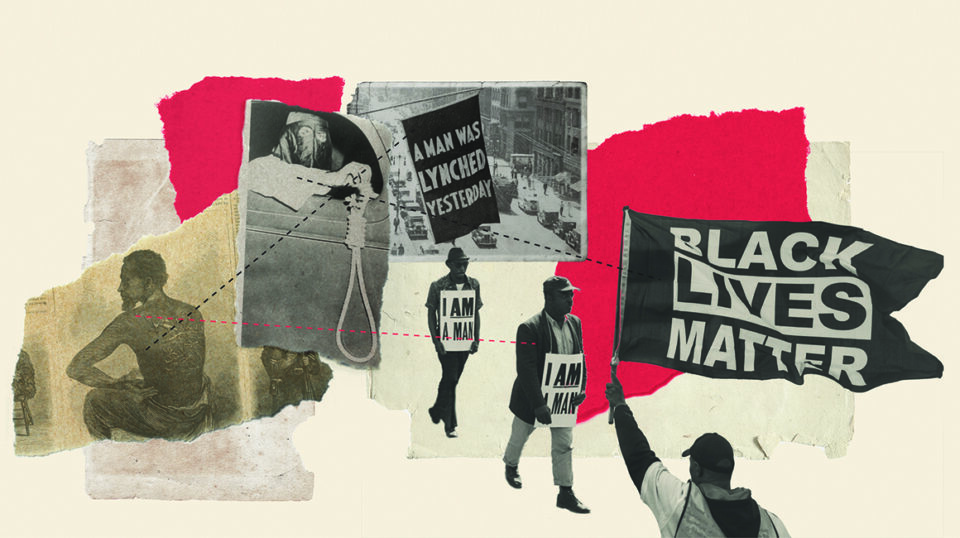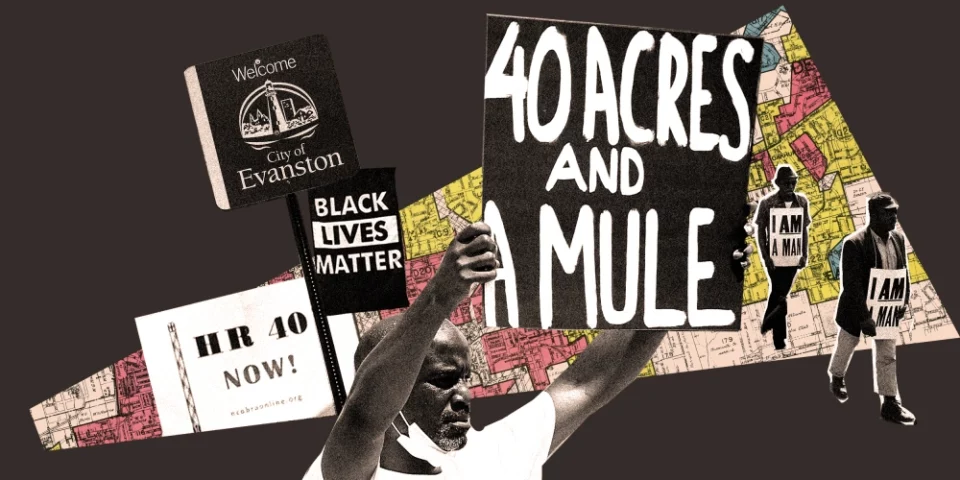
This June, REJ Program Officer DaLyah Jones was invited to a two-day reparations round table organized by Reform Initiatives (RI) and African Futures Lab (AfaLab) in Accra, Ghana. DaLyah participated in a transformative and packed agenda of discussions on the major milestones and key challenges of the reparations and the reparatory justice landscape.
The first day dove into the aims of the reparatory justice movement. Put plainly, the collective of folks on the ground should be the focus of reparations. Impacted communities should guide what reparations look like. Our efforts as organizers of capital and institutional leaders should be aimed at making reparations tangible and inevitable.
Adwoa Nyekye Coleman, Adviser to the African Union Commission (AUC), framed her remarks around bringing the reparations conversation, skewed by the violent theft and enslavement of our ancestors, back to the continent. Coleman’s broadened definition of reparations includes education around why they are necessary. Imperialism and colonialism have cost the continent unquantifiably, and yet – we must run the numbers. The AUC has a ten part plan on reparations centered on not only what, but why.
Head of Programs at the African Union’s Economic, Social, and Cultural Council (ECOSOCC), Kyeretwie Nana Osei, highlighted the need to build an intercontinental coalition to gin up the necessary political will to bolster drafted policies. In Mr. Osei’s estimation, there is not currently a lot of outright opposition across the continent, but there are a lot of lukewarm countries that neutrality has painted as adversaries and some champion countries like Kenya, Ghana and Togo that abstain from allyship with the movement to avoid possible conflict. This movement cannot survive when confined by borders. Osei prompted the audience to consider turning to the reparations movement and state response to resistance in Germany, where reparations have been made tangible, for guidance.
The roundtable identified some key challenges that practitioners are facing. Colonialism has been allowed multiple centuries to shapeshift and increase its insidious footprint of the lives of the colonized, so there is an obvious need for the definition of reparations to remain nimble and adjustable based on the specific needs of communities and individuals. That said, there is a hunger for a cohesive guiding definition of reparations.

With the limited but powerful institutional experience at our disposal (i.e. the Caribbean Reparations Committee), we know that the runway to reparations will require a concerted civil engagement strategy that strengthens bonds between stakeholders by finding unity in this nuanced struggle. The harms of colonization act as a global thruline, connecting the continent of Africa to struggles an ocean away, like the caste system in India. The narrative of this connection has been sporadic, separate, and sometimes silenced. The media system has a precious opportunity to stand in this gap.
Another question the reparatory justice movement is grappling with is how to address the widespread feelings of insecurity that many years of distrustful governance has bred into the public. The people have not experienced the fruits of the democracy many were promised decades ago, but instead have gotten generations of political corruption and puppetry. Other promises of reconstruction have similarly fallen disappointingly flat. Reparations depend on trust and solidarity, and that foundation has proven difficult to solidify in the fallout of colonial rule and continued influence, like in Barbados. Participants in the convening called for a reparations grantmaking toolkit that provides culturally aware and location specific guidance for funders on how to pen and open funding that meets people where they are.
Day one continued with a panel on climate reparations. Meghna Abraham, an independent human rights expert, remarked on the staggering statistics that a mere 25 industrialized countries are responsible for most of the globe’s climate emissions and that, to date, we have lost more than 50% of the Earth’s biodiversity to the worsening climate disaster. Climate degradation at the hands of industry has compromised centuries of responsible stewardship by Indigenous communities. “The people suffering the consequences [aren’t causing] the problem,” Meghna asserts.
The dire financial and medical outcomes of the climate crisis alone are reason enough for swift and bold reparatory action, Fadhel Kaboub of the Global Institute for Sustainable Prosperity and member of the Independent Expert Group on Just Transition and Development shared. “We can’t decarbonize a structure that hasn’t been decolonized yet.” Debt cancellation, a shift toward grants and away from loans, and increased accessibility to lifesaving technologies all aid in the reversal of climate consequences, just as food sovereignty and renewable energy infrastructure do. Yemi Katerere, forester and environmentalist, touched on the dearth of information communities have on how their experiences and the climate crisis are inextricably connected , while also being the primary victims of the industries that pilfer and poison their land, water, and air.

Philanthropic support of reparatory justice has its limits, and they are not insignificant. Bias in philanthropic giving has been well documented, showing women, queer, Trans, and Black organizations receiving a starkly smaller share of available dollars. There is quite a bit of chatter in the funder space about a perceived lack of ‘return on investment’ – as if the reparations of the communities that many philanthropic institutions claim to serve is not a satisfying enough outcome. Moreover, funders assert that there is no guarantee of immediate impact of reparatory giving. Financial reparations is the ground floor of a 20-story house, a faucet in the face of a fire. Philanthropy can and should provide fiscal sponsorship, but the question is…and then what? What of the narrative shift work? What of the wrap around support? How do we not then throw what we’ve fought for back into the system that took it?
The final day of the convening parsed through the challenges of engaging youth, combating antifeminist sentiment, and achieving sustainability in the reparatory movement.
The energy, conviction, and strategies of the youth are critical engines in the fight for reparations. Panelists implored the funders in the room to reserve monies for youth, for everything from boosting capacity to teaching investigative research skills to supplying bail money. Flexible funding seems to be a thorny ask from philanthropic institutions, but it is how funders can best serve any movement. For example, Black Feminist Fund, a participatory fund with a shared decision making process, gives over an 8-year period. Yes, 8. They reject uniformity in grantmaking, naming the compulsion for sameness an outgrowth of colonialism.
Philanthropy can become a tool of erasure when it resists the learnings that African- and indigenous-led movements have been gleaning while doing the most with the least under a system designed to suffocate them. Just look at the research on the proven benefits of investing in Black women.
Participants were urged to form communities of learning and practice around investment driven grantmaking, the rich histories of global reparations, and true allyship. There were some interesting resources shared during the convening, so we’ve dropped a few below for continued learning!
